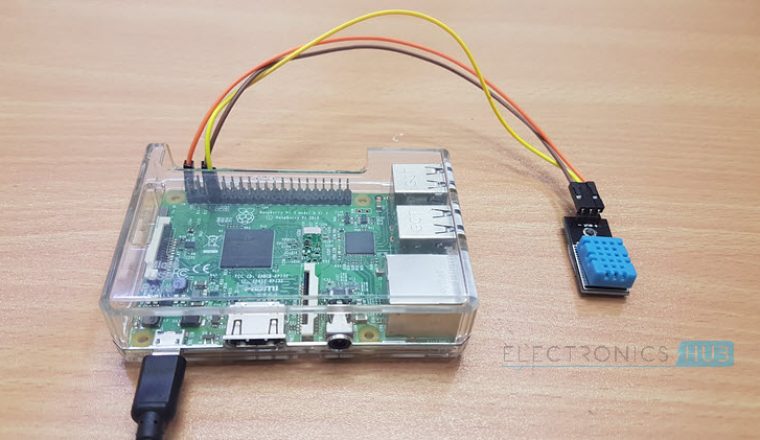
- #Raspberry pi temperature and light logger install#
- #Raspberry pi temperature and light logger driver#
- #Raspberry pi temperature and light logger archive#
- #Raspberry pi temperature and light logger full#
$ sudo chown $ sudo chmod +x /usr/lib/cgi-bin/monitor_1sensor.py (or monitor_2sensors.py)ĥ. Change ownership and permissions on monitor scripts: NOTE: You only need the files for the number of sensors installed. Move files to /var/Leave files in /home/pi : test_sensors.py, 2x13_header.jpg, ds18b20.jpg, GPIO_header.jpg, temp_logger.txt Move files to /usr/lib/cgi-bin : monitor_1sensor.py, monitor_2sensors.py, pint.ico, webgui1.py, webgui2.py (SEE NOTE)
#Raspberry pi temperature and light logger archive#
Power up, then download and unpack the archive into /home/pi, then:

Sensor yellow (or white) wire(s) to GPIO4 (GPIO header pin 7)Īdd a 4.7K ohm 1/8w resistor across GPIO header pins 1 and 7 (ie: between red and yellow/white wires).ģ. Sensor black wire(s) to GND (GPIO header pin 6,9,14,20 or 25) Sensor red wire(s) to +3.3V (GPIO header pin 1 or 17) Shut down, remove power, video cable, network cable, SD card, USB devices, etc, and open case (if used).
#Raspberry pi temperature and light logger install#
Overview: Connect sensors, unpack archive files and move to require folders, set ownership & permissions for files, enable OneWire GPIO support, test the sensor(s), install SQLITE3, create the database, move database to require folder, set ownership & permission for database, create a CRON job to run the sensor polling code, and test the result.ġ. 4.7K ohm axial lead resistor, preferably 1/8W user (default = pi) with superuser access Raspbian (Debian "Wheezy") OS, Apache2 web server, Chromium or compatible web browser already installed. This kit will install support to read one or two DS18B20 "OneWire" temperature sensors, log the reading(s) to a database with a timestamp, and fetch entries from that database to drive a web page with a temperature chart and statistics. RaspberryPi Web Accessible Temperature Logger The first user will receive mega golf claps for any debugging feedback received The rest is covered in the instructions which follow.
#Raspberry pi temperature and light logger driver#
Webgui2.py web page driver script for two sensor system Webgui1.py web page driver script for one sensor system Thermometer4k.png icon image for RaspberryPints integration HD Thermometer.png icon image for RaspberryPints integration Test_sensors.py detect and test script for up to five probes Pint.ico RaspberryPints icon for shortcuts Monitor_2sensors.py logging script for 2 probe system Monitor_1sensor.py logging script for 1 probe system GPIO_header.jpg Another diagram of the RPi' GPIO header It contains:ĭs18b20.jpg picture of a typical wired DS18B20 probe with wire colors The archive file is located on my Google Drive share here.

I think the procedure is solid - I actually walked through the installation twice and let the results run for over a day (and still have both versions running) - but then again, that was on my 'Pi - which I've been thrashing pretty thoroughly - so there's always the possibly there's an undocumented step that will have to be exposed on a "virgin" 'Pi. I pretty much assume the user has the 'Pi for RaspberryPints service and is looking to expand its utility - hence certain prerequisite packages are also assumed to have been installed (eg: Raspbian OS with LXDE, Apache2, Chromium browser) and aren't dealt with at length. With that intro out of the way.I've put together an archive file with the files needed to implement one and two channel temperature loggers, along with instructions and a few images for orientation when wiring the sensors to the 'Pi.

#Raspberry pi temperature and light logger full#
The user can display a plot of temperatures over the last hour, 6 hours, 12 hours, 24 hours, and a full week. The interactive graph is generated by a Google service using Javascript, then the page is served by my 'Pi. I linked the temperature log page to my RaspberryPints taplist via the hotspot temperature icon at the top-right corner for easy access. I intend to add at least two more probes which will monitor my fermentation fridge and my cold conditioning/carbonation fridge. Starting with my keezer and adding a pair of DS18B20 "One Wire" digital temperature probes I can now monitor my keezer air temperature and the temperature of the "fullest" keg therein as measured by a probe in contact with the middle of the keg exterior, insulated with a 1" thick piece of closed cell foam roughly 4" on a side. There really isn't anything out there that does this well - if at all - aside from "home brewed" solutions.īy implementing the RaspberryPints kit I had nearly everything I needed to cobble together a solution for remotely monitoring system temperatures in my little brewery. When Thadius and company came out with their RaspberryPints project I immediately grabbed up all the recommended parts, put my system together and got my taplist displayed above my keezer and accessible via my intranet or even the internet.īut what I have really been wanting for some time was a networked temperature logger that could drive a web page without needing to use an external service to access the information.


 0 kommentar(er)
0 kommentar(er)
